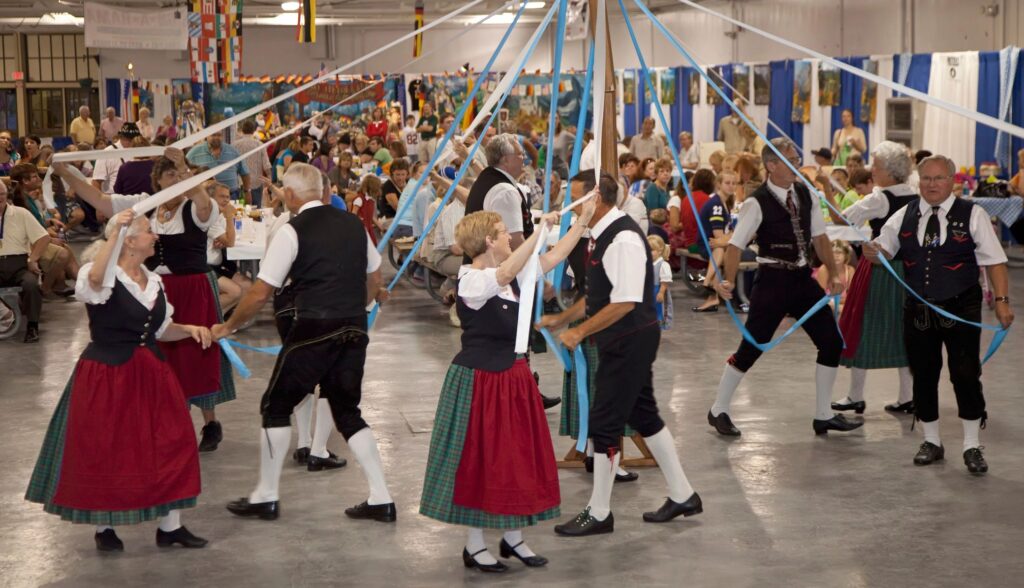Experts offer advice on how to get the best deals and where to go this autumn

Start planning your fall getaway now to get the best travel deals.GETTY IMAGES
By Elaine Glusac, AARP Published July 12, 2024
Deep in the season of pool parties and barbecues, the keenest bargain-seeking travelers are channeling pumpkins and fall foliage, knowing that now is the time to plan autumn vacations.
Experts say the ideal booking window for domestic flights in advance of a spike in fares is 30 to 60 days before departure. International trips stretch those windows. Though major destinations such as London and Paris often generate decent deals as close as three months out, generally the best foreign fares can be found five to six months before travel.
A survey for AARP found 65 percent of travelers 50-plus plan to travel this year. Wherever you’re bound this fall, here’s what to expect in the season ahead and where to consider going.
Timing is everything
By the end of 2024, travel is expected to fully recover from the 75 percent drop experienced in 2020, according to a report from the business consultancy McKinsey.
That means travel is returning to some familiar patterns. Travel surges, which beget higher prices, tend to mirror school calendars, making back-to-school season a relatively quiet and affordable time for those who can get away.
“Fall is the second-best time of year to travel,” says Hayley Berg, an economist at the travel booking app Hopper, noting that the cheapest time of year in terms of airfare and hotel prices is January. “In fall, you typically save about 30 percent off peak summer prices. There are fewer crowds, and airports aren’t as busy, so that helps reduce travel disruptions.”
Cheaper costs and fewer hassles often meet decent weather in fall.
“The best travel hack is extending summer into fall,” says Philip Ballard, the chief communications officer and travel expert for the online booking site HotelPlanner. “Walking on a beach is just as romantic in a nice sweater in October as it is in August, and the rates will come down.”
Nightly hotel rates tend to drop about 20 percent in fall compared with summer, he adds, and with 50 percent less occupancy, “You can get a seat at a restaurant, and it’s a more laid-back experience.”
Some exceptions to the fall-is-cheaper rule apply to holidays, including Thanksgiving. But the period between Thanksgiving and the December holidays is a great time to stretch your budget.
“The least expensive time to travel everywhere is that little pocket after Thanksgiving and before Christmas,” says Shelby Frenette, a travel adviser and owner of TravelFun.Biz agency in Boca Raton, Florida.
Inflation and the recovery of the hotel industry, which uses dynamic pricing to boost rates as bookings grow, have made many travel costs more expensive this year, Frenette says. Economic trends are another argument for booking early, but price hikes haven’t stopped her clients. “The 55-plus crowd has a YOLO mindset,” Frenette says, using the acronym for “you only live once.” “Everyone wants a good value, and no one wants to overpay, but they understand that our time here is a gift, and they want to enjoy the present.”
A pandemic-born focus on mental health also bolsters travel demand. “Travel is wellness now, and that’s new,” Ballard says. “People are reprioritizing travel in terms of annual budgeting and considering travel an essential part of health and wellness.”

Cruisers can enjoy views of the changing leaves from the water.
Fall travel inspiration
Fall’s perennial draw, foliage fever, brings road trips to mind. Or for something less DIY, “a cruise in New England or Canada is a great way to see fall color,” Frenette says. Cruise lines including Holland America and Norwegian station ships in New England and the St. Lawrence River in September and October, offering weeklong departures starting at about $120 a night. To enjoy the fall color for a bit longer, American Cruise Lines offers a 15-day New England Fall Foliage cruise that travels from Portland, Maine, to New York City.

Combine leaf peeping with another seasonal event — Oktoberfest — without leaving the U.S. German-themed beer and harvest festivals are common around the country in September and October. Many popular events take place in communities with strong immigrant ties such as Frankenmuth, Michigan; Fredericksburg, Texas; and the seven rural villages known as the Amana Colonies in Iowa.
Visits to national parks start to drop off from summer highs in September, but to seek seclusion at popular parks such as Acadia in Maine and Zion in Utah, try November. “If you go on a Tuesday, Wednesday or Thursday when the kids are in school, there’s less volume, and they’re also the best times to fly to avoid business and leisure travelers,” Ballard says.
Fall is a great time to plan a birding trip as many species transition from summer to winter habitats via migration hot spots from Cape May, New Jersey, to Monterey Bay, California. Visitors to Point Pelee National Park in southern Ontario, one of Canada’s smallest national parks, can catch fall migrants including kittiwakes returning from the Arctic and take advantage of the favorable exchange rate between the Canadian and U.S. dollar (right now, $1 equals about 1.37 Canadian dollars).
Though most travel spending is domestic, people trying to make up for time lost to the pandemic — a phenomenon called revenge travel — drove a surge abroad in recent years. Tour operators say demand remains strong.
“Mediterranean destinations are always popular for us in the fall as participants prefer to head there when there are fewer crowds and more mild, though still sunny, weather,” says Kelsey Knoedler Perri, director of public relations for Road Scholar, a nonprofit tour company that caters to travelers over 50.
This year, the company launched trips for solo travelers, offering opportunities to travel in small groups with those with similar interests. Some of its popular fall destinations overlap with domestic solo trips in New Orleans (six days from $1,899) and Chicago (six days from $2,499) and abroad in Costa Rica (nine days from $2,249) and Italy (12 days from $4,999).
Elaine Glusac is a freelance writer in Chicago who regularly contributes to AARP.org and writes the Frugal Traveler column for The New York Times.
